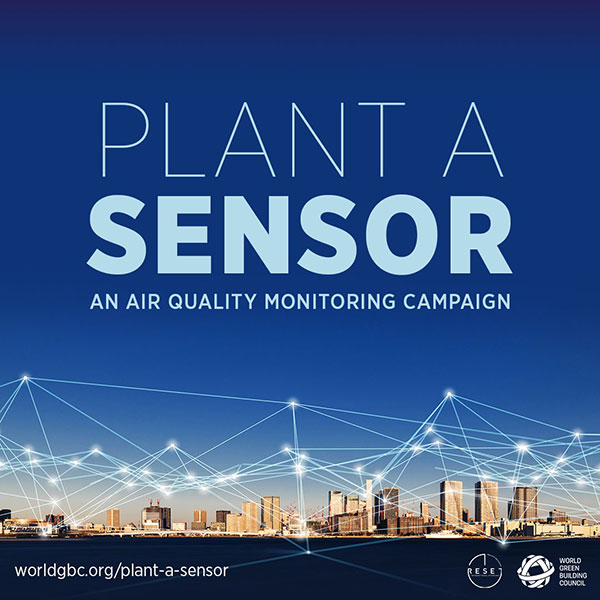This week, the World Green Building Council global network is announcing the official launch of the ‘Plant a Sensor’ campaign. The air quality monitoring programme is a cornerstone of the network’s Air Quality in the Built Environment’ campaign, and aims to increase access to reliable air quality data centred on the buildings and construction. Plant a Sensor is a global air quality campaign led by the World Green Building Council (WorldGBC), in collaboration with RESET and in partnership with the Wilson Centre and Earth Day Network. Together with the network of global Green Building Councils and partners, these organisations are aiming to trigger action towards the development of a sustainable built environment through the availability and promotion of real-time air quality data.
When we think of air quality and our exposure to pollution, the image we most commonly associate with this well-documented threat is fumes from vehicle exhausts, or more recently news reports showing visible blankets of pollution from forest fires. Whilst these sources of these pollution are undeniably highly dangerous, their visibility – both to the human eye, and in global media attention – make them a more fathomable threat. In this article, we want to raise awareness and understanding about some of the lesser known sources of pollution – our homes, offices, cities and entire built environment.
Buildings, throughout their entire life cycle, are an incredibly significant and often under-represented source of air pollution. This pollution is taking place within our buildings, in cities and surrounding areas, and contributing to the crisis on a global scale. Poor air quality is causing serious harm to human health, biodiversity and the atmospheric balance of greenhouse gases, and we know that over 90% of us are exposed to high levels of pollution on a daily basis (Source: World Health Organisation).
Causes of ambient, or outdoor, air pollution from the built environment range from the energy production to construct and power our buildings (39% of global energy-related carbon emissions are attributed to buildings), the particulate matter created by heating and powering buildings, the complex compounds released by mechanisms used to cool our buildings (some air conditioning systems release HFCs, CFCs, etc) and of course the multifaceted layers of emissions created from the construction process, transportation of building materials and end of life.
For those well versed in the health and wellbeing conversation, it won’t be a surprise to announce that outdoor emissions are only half the story – for a population that spends 90% of its time indoors, the air we breathe within buildings is debatably even more important for improving human health. The relationships between in and outdoor air quality are not distinct – it is understood that cross-contamination occurs, with outdoor pollution seeping in – but a body of research highlights the importance of healthy levels of chemical exposure, ventilation and building fabric quality that can help to manage our exposure to air-borne pollutants and compounds that can negatively impact our health and wellbeing.
Addressing the built environment, both the way we operate and exist in our buildings and the way we design and create them, could play a truly incomparable role in helping to combat our global air pollution crisis. When the scale of the built environment is considered to include transportation and urban design, the scope and opportunity for healthy, sustainable change further heightens in magnitude.

This week the WorldGBC global network invites our members, partners and wider industry to help us recognise the importance of air quality in the built environment. Help us increase access to real-time air quality data by getting involved in the Plant a Sensor campaign, and see the World Green Building Council’s website for resources and information about air quality in the built environment and health and wellbeing more holistically.
To find more information on the global air pollution crisis, click here.
Content Team
Work in Mind is a content platform designed to give a voice to thinkers, businesses, journalists and regulatory bodies in the field of healthy buildings.




